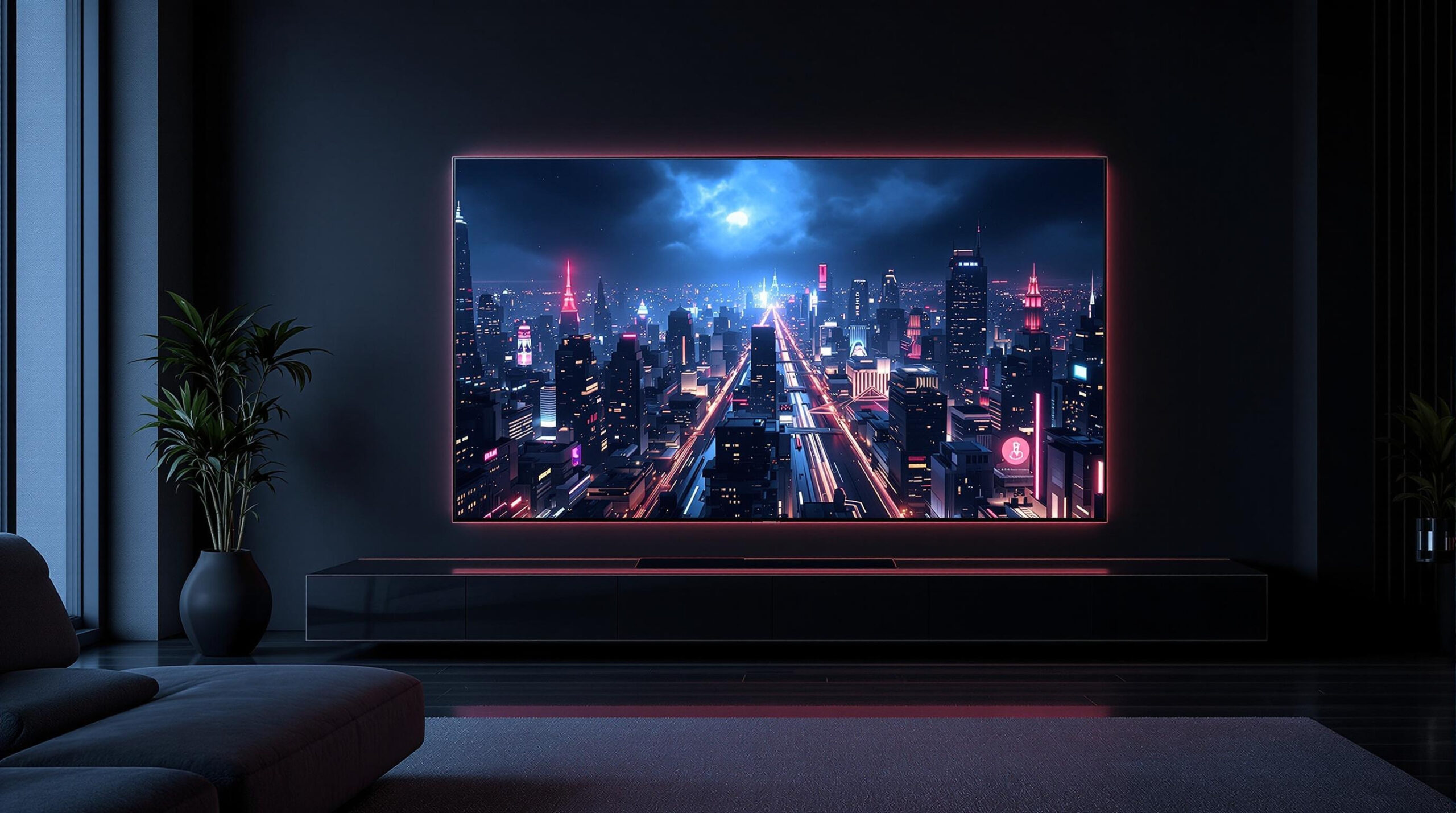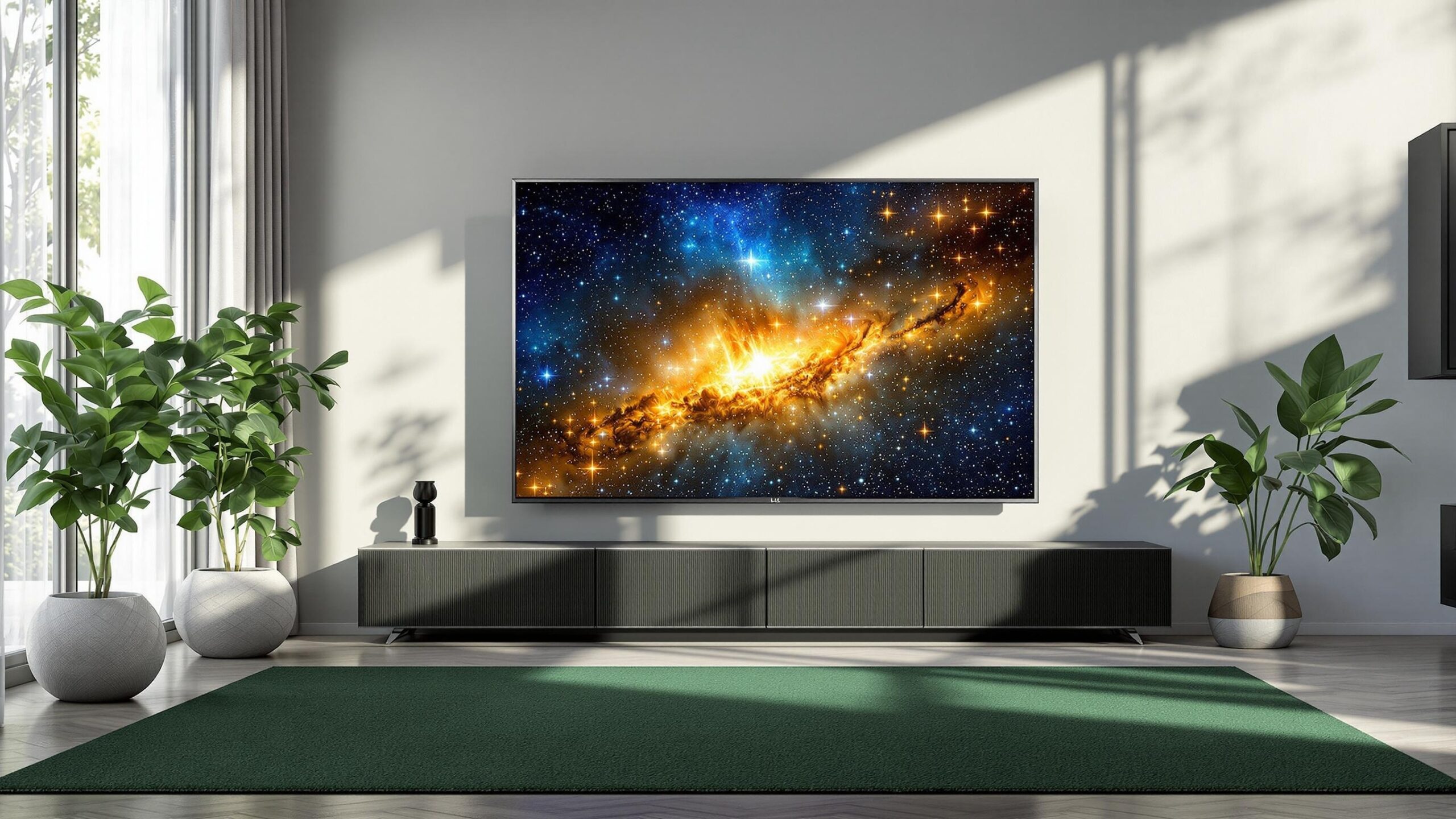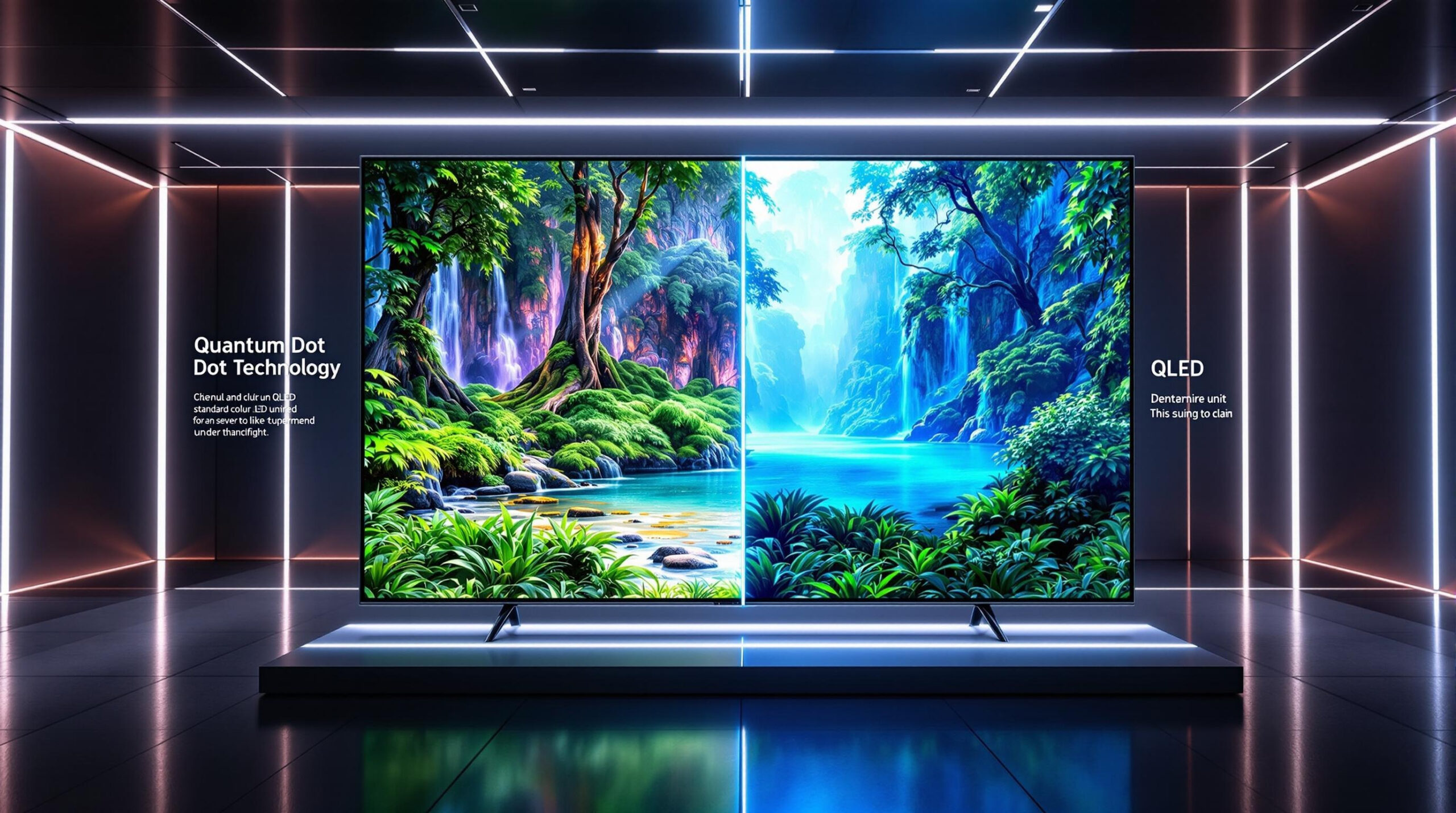Modern television has become a battleground of pure light and shadow. On one side stand brilliant HDR highlights that can mimic sunlight on chrome; on the other, velvety blacks that swallow stray photons. Achieving both in a single device is an optical high-wire act, yet the latest Quantum Dot Light-Emitting Diode (QLED) sets claim they can deliver “perfect blacks” and “infinite contrast”—phrases once reserved for self-emissive OLED panels. Behind those marketing claims lies a layered story of quantum mechanics, precision chemistry, nanometer-scale engineering, and sophisticated signal processing. This deep-dive strips away hype and jargon to reveal, in plain language, exactly how QLED televisions push LCD architecture to its dark-room limits.
Why Blacks and Contrast Dominate Picture Quality
When you dim your living-room lights and press play on a film mastered for HDR, the display’s ability to show nothing—literal darkness—matters as much as its ability to show everything else. Human vision interprets scene depth, texture, and emotion through contrast. If a display cannot throttle luminance down to fractions of a nit while simultaneously exploding a highlight above 1,500 nits, shadow detail collapses and specular sparkle looks washed out. “Infinite contrast” is the theoretical condition where luminance in the darkest pixel is zero; divide any finite number by zero and you mathematically apex the contrast ratio. QLED panels chase that ideal by addressing three intertwined problems: leak-proof backlighting, spectrally pure color conversion, and intelligent brightness control.
Quantum Confinement: The Physics That Paints with Nanocrystals
At the heart of every QLED TV sits a thin polymer film sprinkled with billions of semiconductor grains only two to ten nanometers wide. These quantum dots exploit quantum confinement, a phenomenon in which electrons and holes are squeezed so tightly that energy levels become size-dependent. Shrink a cadmium-selenide crystal to five nanometers and it fluoresces red; shave it to three nanometers and the same crystal glows green. Because each dot’s emission bandwidth is just 20–30 nanometers wide, its light is spectrally “sharp,” meaning very little color overlap. That narrowness is critical: when a scene fades to black, stray red or green photons outside the intended wavelength can create muddy greys. By confining the emission band, quantum dots keep shadows uncontaminated while still producing a huge native color gamut that approaches the BT.2020 HDR standard.
From Blue LEDs to Perfect White: The Chemistry of Color Conversion
QLED displays begin with a blue backlight created by gallium-nitride light-emitting diodes. Blue is chosen because its photons carry more energy than red or green ones, giving quantum dots the “budget” they need to down-convert. When blue photons strike a dot, they excite electrons, which then drop to a lower energy state and emit precisely tuned red or green light via photoluminescence. Because not all blue photons are absorbed—some pass straight through—the mixture of unconverted blue plus newly minted red and green forms an exceptionally pure white. The thin-film encapsulation, often a multilayer sandwich of zinc-sulfide shells and UV-blocking polymers, ensures dots don’t oxidize, agglomerate, or shift color over years of bombardment. High quantum yield—typically above 90 percent—means nearly every absorbed photon re-emerges as visible light rather than waste heat, letting manufacturers run the backlight cooler and dimmer when dark scenes demand it.
Mini-LED Backlights: Engineering Darkness One Zone at a Time
Traditional edge-lit LCDs struggled with blacks because a single light bar illuminated the whole screen; dimming for a night scene inevitably starved the image’s bright highlights. QLED’s answer is the full-array local-dimming (FALD) backlight, now evolved into the Mini-LED era. Shrink an LED die to about 150 micrometers—roughly the width of a human hair—and you can tile tens of thousands across the display. Each Mini-LED is grouped into a dimming zone governed by high-frequency MOSFET drivers capable of modulating current hundreds of times per second. When a star glints in a moonless sky, only a handful of zones need to spike to peak brightness while their neighbors drop toward zero, slashing unwanted halo glow. In flagship 85-inch QLED sets, zone counts exceed 5,000; algorithms sample incoming frames, predict zone-level luminance, and apply gamma-compensated drive signals so that even partial-pixel transitions appear seamless.
Optical Isolation: Blocking Photons from Wandering Off
Electronics alone cannot guarantee darkness if photons scatter sideways within the stack. Engineers therefore embed black matrix walls and double-diffuser layers between the liquid-crystal glass and the Mini-LED sheet. The black matrix absorbs oblique rays, preventing a brightly lit subpixel from leaking beneath its neighbor’s aperture. Meanwhile, a pair of diffusers—one collimating, one Lambertian—spreads each zone’s light uniformly so local-dimming transitions do not telegraph as blocky patches. Add a polarizer that cross-checks the liquid crystal’s twist state and you get a gated light valve that opens only where needed, throttling residual luminance down to millinits in the darkest parts of the frame.
Liquid-Crystal Duty Cycle: Faster Shutters, Deeper Shadows
Even the purest backlight will glow grey if the liquid-crystal layer cannot fully block it. High-end QLED panels use 1 ms response-time VA (Vertical Alignment) crystals that stand perpendicular to the substrate when energized off, acting like tiny Venetian blinds. Their high extinction ratio—often greater than 4,000:1—means nearly all backlight photons are halted for that pixel. Because response is fast, the TV can insert black frames or perform backlight strobing without perceptible flicker, further reducing motion blur and lowering the on-screen duty cycle so bright zones stay bright but dark zones fade to near-black.
AI Tone-Mapping and Object-Based Dimming
Physics sets the stage; silicon calls the cues. Today’s QLED televisions incorporate neural processors trained on vast scene libraries. They parse frame luminance histograms, identify specular highlights, and tag them as separate objects. The dimming engine then issues per-zone current maps that anticipate blooming before it happens. If a candle flame flickers near a character’s face, the AI flares the flame, brightens immediately adjacent flesh tones, but clamps everything else—maintaining facial detail without lifting the room’s darkness. Some sets update these decisions at 120 Hz, syncing dimming logic to the panel refresh so decisions remain invisible to the human eye.
Anti-Reflective Nanotextures: Fighting Ambient Light
Perfect black loses its luster if your living-room lamp bounces off the panel. QLED manufacturers etch sub-wavelength nano-cones into the topmost glass layer, creating a graded refractive-index profile that gently bends incoming ambient light down into the panel where it is absorbed. This moth-eye coating can cut surface reflections below one percent—enough to make blacks look black even at noon. Because the texture is physical rather than chemical, it does not yellow with age and adds negligible pixel blur.
Thermal Management and Power Budget
Driving thousands of Mini-LEDs at thousands of nits sounds energy-intensive, yet QLEDs abide by Energy-Star limits thanks to two factors. First, quantum-dot conversion is efficient—minimal Joule heating. Second, local-dimming algorithms dim most of the backlight most of the time; only small portions peak simultaneously in real-world content. Aluminum nitride heat spreaders pull residual warmth into a rear graphite sheet, keeping junction temperatures stable and preventing color shift of the dots or the blue LED dies, which lengthens lifetime toward 100,000 viewing hours.
The Horizon: Toward Self-Emissive Quantum Dots
Despite strides, QLED blacks are technically “near perfect” because some photons still sneak through the offest zones. Researchers are pushing two parallel paths. The first is QD-OLED, where quantum dots convert blue OLED subpixels within each pixel aperture, marrying OLED’s per-pixel shut-off with QLED’s color purity. The second, more radical path is electro-luminescent QD-LEDs, in which electrons tunnel directly into quantum-dot cores, allowing each dot to shine on command without any LCD or backlight. Early prototypes hit 500,000:1 static contrast with cadmium-free indium-phosphide dots, hinting that the ultimate “infinite” LCD might one day be replaced by a truly emissive, inorganic quantum-dot canvas.
Putting It All Together: A Symphony of Science
When you pause a film on a QLED display and admire a single candle dancing in gloom, keep in mind the orchestration underneath. Quantum confinement tunes tiny crystals so their colors stay pure in half-light. Blue Mini-LEDs pulse in micron-precision clusters, their stray rays trapped by black matrix trenches. Liquid crystals twist shut in a millisecond, while AI routines modulate drive currents so intensities fade and rise invisibly. An anti-reflective nanotexture kills living-room glare, and heat pipes whisk waste warmth away before it taints the dots’ spectral fingerprints. Each discipline—solid-state physics, colloidal chemistry, photonic engineering, embedded machine learning—plays its part in the quest for darkness. The result is blacks that approach perceptual zero, highlights that pierce reality, and a contrast ratio so vast it feels, if not mathematically infinite, then emotionally boundless.
QLED TV Reviews
Explore Philo Street’s Top 10 Best QLED TV Reviews! Dive into our comprehensive analysis of the leading QLED TV products, complete with a side-by-side comparison chart to help you choose the perfect protection for your devices.




